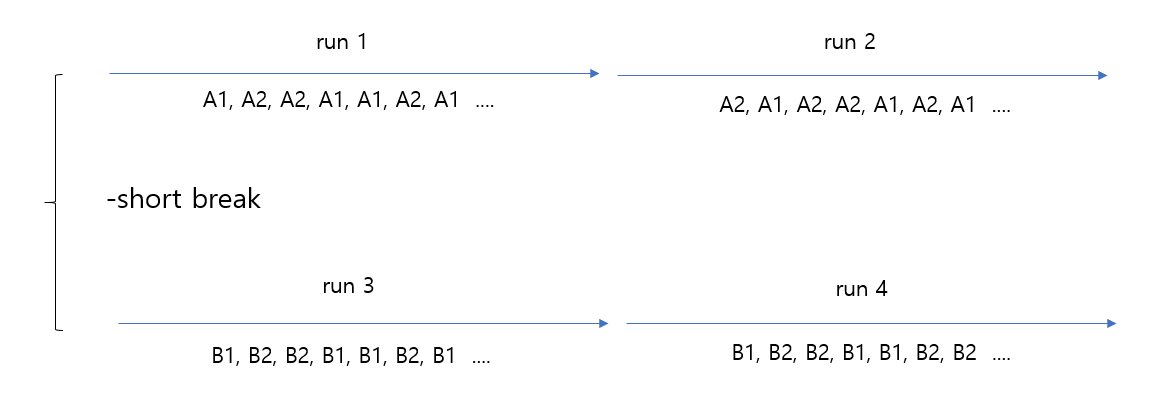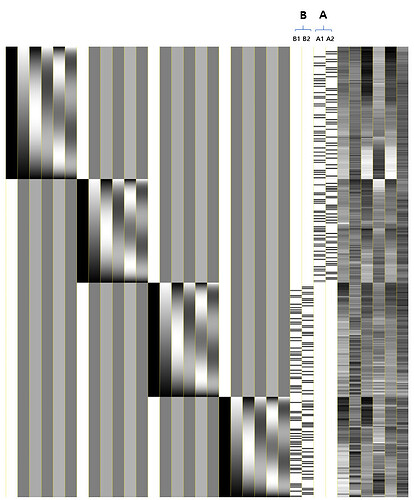Hi, Gang.
First of all, thank you greatly for your reply. I wasn't expecting to get help this fast and was about to give up on learning to use AFNI ,,
and I wasn't clear on my explanation about my task design, and I apologize that made a mistake on a previous posting because what I want to see is actually contrast of A>B.
(My task is actually 2X 2 X 5 design, but I usually account for the last variable as parametric modulator or just ignore the last variable only for simplified analysis. and whether I include the last variable or do the simplified version, the result doesn't change much that contrast between A>B is always non significant....)
Anyway, to answer your question,
1) do you have four task conditions—A1B1, A1B2, A2B1, and A2B2—in your experiment?
yes, it's a four conditions task
*A1 – Disclosed, Higher Status
*A2 - Disclosed, Lower Status
*B1 - Hidden, Higher Status
*B2 - Hidden, Lower Status
2) Is the order of these conditions randomized across participants, and is each condition confined to one of the four runs? Is the design event-related or block-based?
I had 4 runs total,
in run 1,2 condition A1,A2 was randomized in event-related fashion.
in run3,4 condition B1,B2 was randomized in even-related fashion.
(my supervisor recommended a cross-over design for my experiment)
And I guess for condition A,B it was a very long block design?
I hope my diagram helps you to understand better.
Each run lasts about 8 to 10 minutes, and the response was always self-paced.
order of condition A,B was counterbalanced between subjects.
3) How many trials are there per condition?
I have 60 trials per run. (60 for each condition)
4)Additionally, how are you modeling the hemodynamic responses—using a canonical HRF or through HRF estimation?
yes, I have been using a canocinal HRF + stick function through spm.
In AFNI I used GAM function which drastically changed the results in subject level analysis. (I'm planning to ask this in another topic) My supervisor doesn't favor(?) TENT function so I can't use this in my analysis.
What is the equvalent of a canonical HRF + stick function in AFNI?
5)If you're considering amplitude modulation with the -stim_times_AM2 option, it could be appropriate if you assume a linear attenuation a priori. Alternatively, you might estimate trial-level responses and analyze the attenuation effect at the group level. However, if you're simply comparing A1 and A2, modeling the attenuation effect may not be essential.
so this means that I won't need to consider modeling attenuation across 1,2,3,4 runs instead just consider trial-wise attenuation effect.
and also If I'm assuming a linear attenuation a priori,
AFNI's defautl setting already considers this linear drift as - polort 5 setting?
Thank you greatly for your contribution and I hope you have a wonderful day,
-Saim

